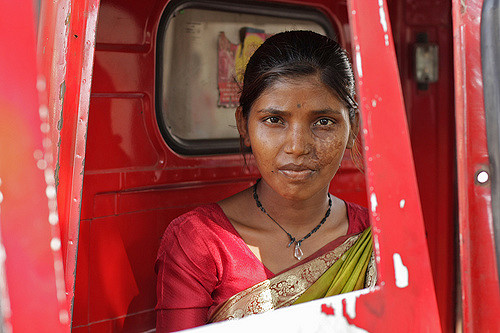10 Facts About Mumbai Slums

Currently, one in eight people across the world lives in slums. In 2014, an estimated 881 million urban residents lived in poor informal settlements in developing countries. These numbers are especially high in India where the 2011 census found that more than 17 percent of urban Indian households live in slums. Mumbai is one of the most populous cities in India, and while it is one of the wealthiest and most developed regions in India, it is also home to one of the world’s biggest slums. This article discusses the key facts about Mumbai slums.
Top Facts about Mumbai Slums
1. The United Nations Habitat program defines slums as informal settlements that lack one or more of the following five conditions: access to clean water, access to improved sanitation, sufficient living area that is not overcrowded, durable housing and secure tenure.
2. Mumbai, which is surrounded by water on three sides, has waged a constant battle since the colonial era to find space to expand. Adding to the pressure is the fact that growing employment opportunities in the city have led to a continuous influx of migrants from other areas of India. The shortage of affordable housing and a steady increase in real estate prices in the city has made formal housing unaffordable for most of these migrants.
3. An estimated 6.5 million people, around 55 percent of Mumbai’s total population, live in slums.
4. In Mumbai, slums are notified or recognized by the government if they were settled on state or city government-owned land prior to 2000. Nearly half of Mumbai’s slums are non-notified, meaning they have no security of land tenure and are not entitled to access city services like connections to the water supply and sanitation.
5. Most slum houses do not have individual toilets and taps. Residents have to pay to use community toilets which are rarely maintained and buy overpriced water from vendors. Some 78 percent of community toilets in Mumbai’s slums lack water supply and 58 percent have no electricity. Many slum houses do not have proper doors.
6. Dharavi, with an estimated population of one million people, is not only one of the biggest slum areas in Mumbai, but in the whole of Asia. While physical conditions in the area are dire, it has a thriving informal economy with an annual turnover of one billion dollars by some estimates.
7. Mumbai’s slums occupy 12 percent of its total geographic area and up to a quarter of the available construction area in the city.
8. Alarmed by the rising number of slums and in order to free up land, the state government has been attempting to rehabilitate the slums in Mumbai since the 1990s. The Slum Rehabilitation Authority allows private builders to construct new properties in former slum areas if they can get the consent of the current residents. The developer has to re-house the residents in the newly constructed buildings, free of cost. The rest of the available construction area can then be used to build upscale towers for commercial sale. These slum rehabilitation projects thus provide developers with an opportunity to access prime real estate, while renewing the area.
9. These slum rehabilitation projects are receiving significant resistance. The main concern is that they mainly focus on residential buildings that leave no space for informal businesses that are the livelihoods of many.
10. Apart from the millions of people living in Mumbai slums, the city also has a high number of homeless who cannot afford any form of permanent shelter. The official number of homeless people in the city is around 50,000. Some argue that the actual figure might be much higher.
While the living conditions in Mumbai slums are unimaginable and much more attention should be given to providing adequate services to people who live there, they also provide shelter and employment for millions of migrants who hope for better lives in the city.
– Helena Kamper
Photo: Flickr
